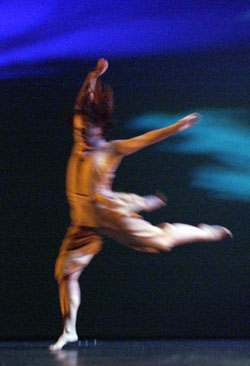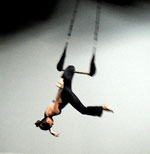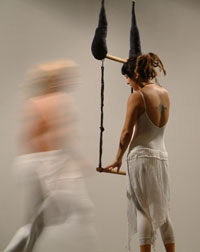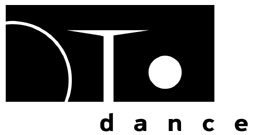



|
||||

Powering up Koesters strives to keep his electronic music
vibrant
Dance-music composer Chuck Koesters, a member of O-T-O Dance, is well aware that electronic music risks boring its audience. "Electronic music can be about as interesting as your word processor, if you're not careful. So I'm always trying to add something to make it as real and as human possible," he says. Koesters creates much of his music on synthesizers, sequencers and samplers, but he also adds a variety of conventional instruments, sometimes played live to the accompaniment of the recorded score. For example, Koesters' music for Seattle choreographer Robert Davidson's latest trapeze work, "The Dance of the Inclusae and the Holy Mother," is mostly synthesized, but it also includes jaw harp, flute, piccolo and shakers. Davidson, a composer and pianist himself, added a keyboard part and sang a hymn in the piece's middle section, Koesters says. Tucson audiences can experience Koesters' latest score and Davidson's latest dance in tandem starting Thursday morning, when O-T-O opens its newest concert at the Pima Community College Center for the Arts. The program, which kicks off O-T-O' 12th season, also will feature a new work choreographed by artistic director Anne Bunker, with a score by Native American flutist and composer R. Carlos Nakai; the premiere of "Mingus," a solo choreographed and danced by longtime O-T-O associate Mary Putterman; and the revival of O-T-O pieces "Mercurial Origins" and "Widows." Koesters figures he's composed between 15 and 20 pieces of music for O-T-O dances in the last 11 years, including one for O-T-O' debut concert in 1985 at Centennial Hall. Koesters also is O-T-O' executive director, a lighting and sound designer and an occasional dancer with the troupe. He has been married to Bunker for almost five years. In addition to their O-T-O activities, Koesters and Bunker also work as a duo called Art Gecko, through which they conduct workshops for schoolchildren in musical-instrument making, creative movement and concert production. A self-taught musician, Koesters plays anything he can get his hands on - from dulcimer to didgeridoo, guitar to found objects. Born and raised in a farming family in Omaha, Neb., Koesters always loved music as a child, especially that of Ray Charles. He first realized music's potential when he saw a film about the Vietnam War in high school. It featured the song "Ohio," the Crosby, Stills, Nash & Young lament about the tragedy at Kent State. "I was just mesmerized by the combination of what was happening on the screen and in Neil Young's music; that power when you combine two different elements affected me greatly," Koesters says. Yet when Koesters asked his parents for music lessons, they were shocked. "My parents were like, `No one in the family plays musical instruments. How can you? It's not part of your genetics,' " he says, chuckling. "So I had to wait until I got a little bit older and started getting my own instruments." Koesters worked the family farm for most of the '70s. He moved to Arizona in 1979, where he worked a few years at a Pearce water-treatment utility. In the early '80s, he started jamming with fellow musicians James Kelley and Stephanie Demos in a studio near the Cochise Stronghold. Bunker heard Koesters' music through Kelley, then her brother-in-law, and asked him to compose music for a dance piece. They've worked together since. Koesters says that although he and Bunker have similar artistic sensibilities, their working arrangement also is a matter of convenience. "The studio is right next to the bedroom, so we could be lying around talking about an idea for music and suddenly we could run into the studio and do it," Koesters says. "But I also like to think it's my talent (that attracts Bunker to his music)." Although Koesters now uses a computerized, multi-track studio with MIDI (Musical Instrument Digital Interface) capabilities, his first scores were recorded quite primitively. "We actually used to record two stereo takes on boom boxes. We'd play them at the same time to two more tracks, mix those together and add onto that a fifth live track," he says. Koesters boasts, "We've never let technology, or the lack of it, stand in the way as to getting what we wanted from music." While he's working on a CD of his non-dance music and has composed for independent films, Koesters knows his music for choreography is not meant to stand alone. "The goal is not to appreciate the music or the dance singularly, or the lights and costumes for that matter. All these elements come together to create something that couldn't be what it is if it were separate parts." |
||||